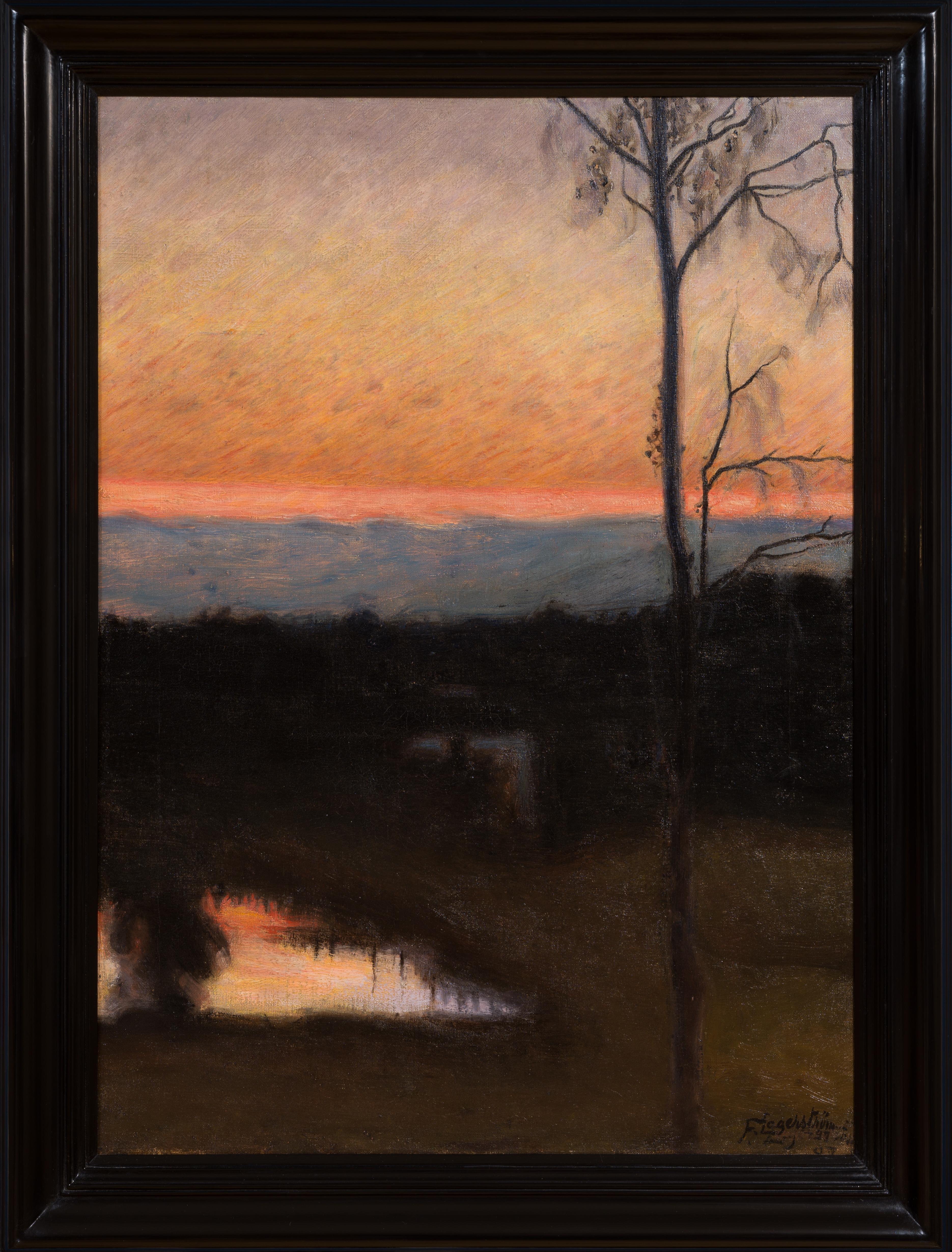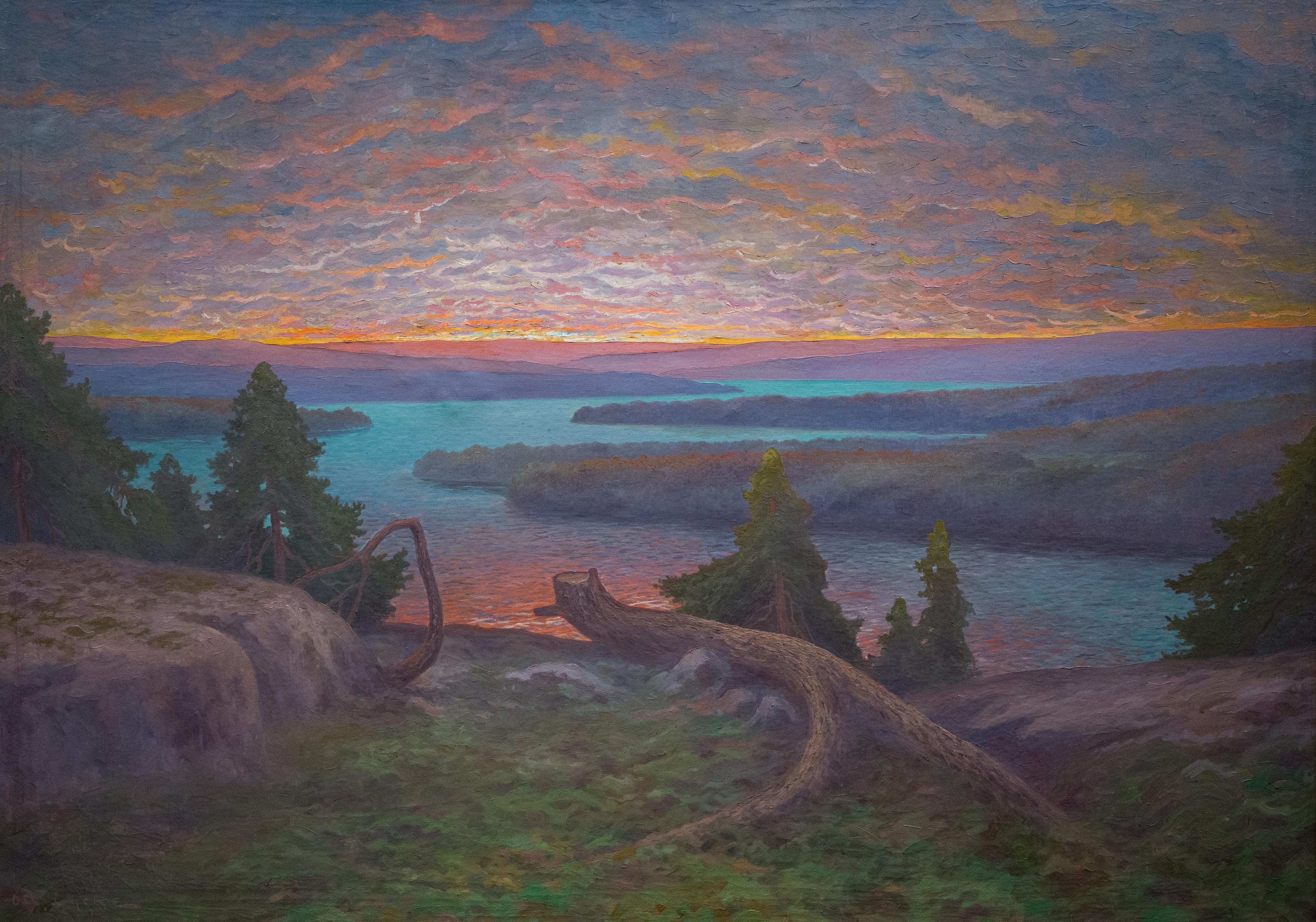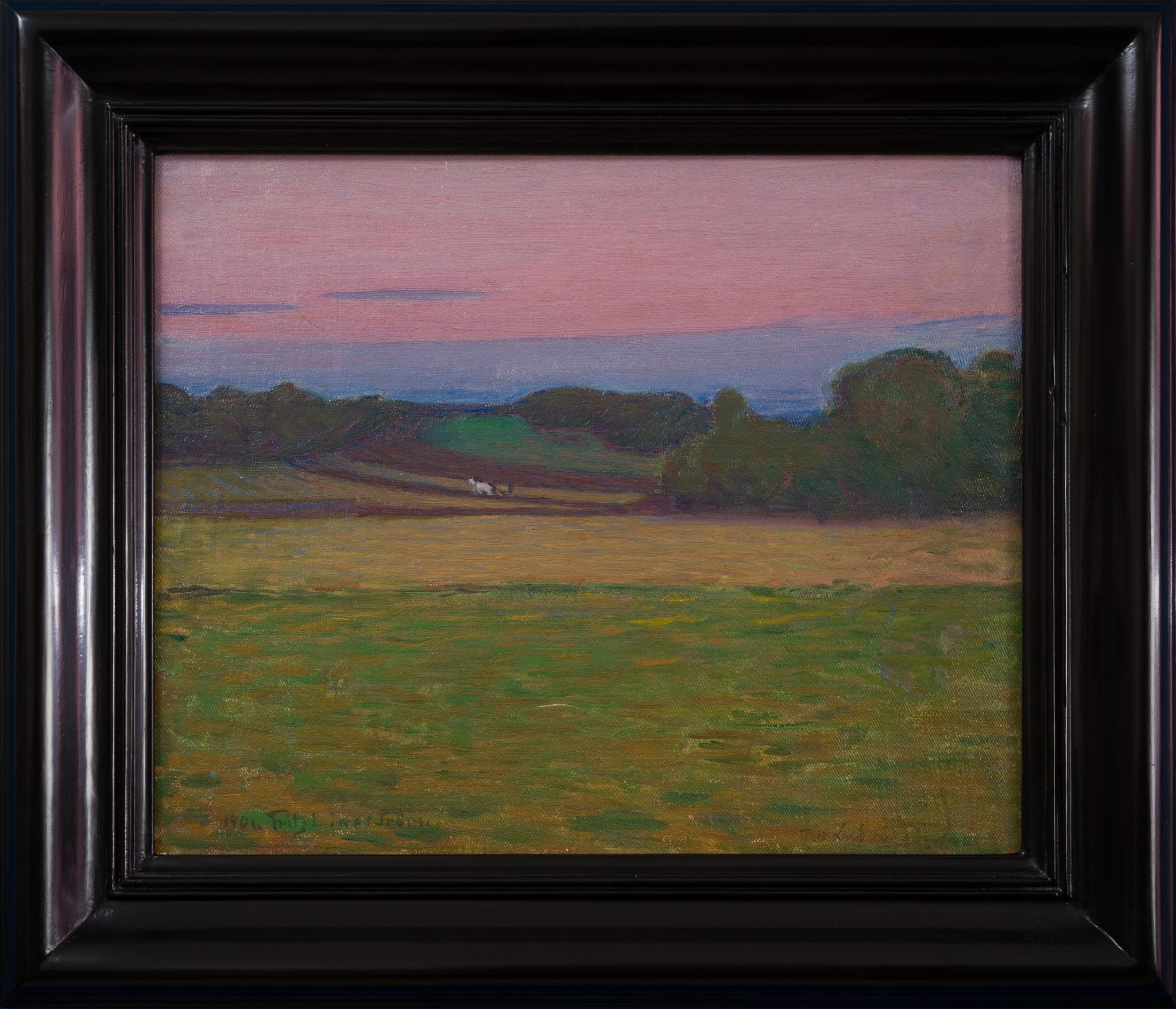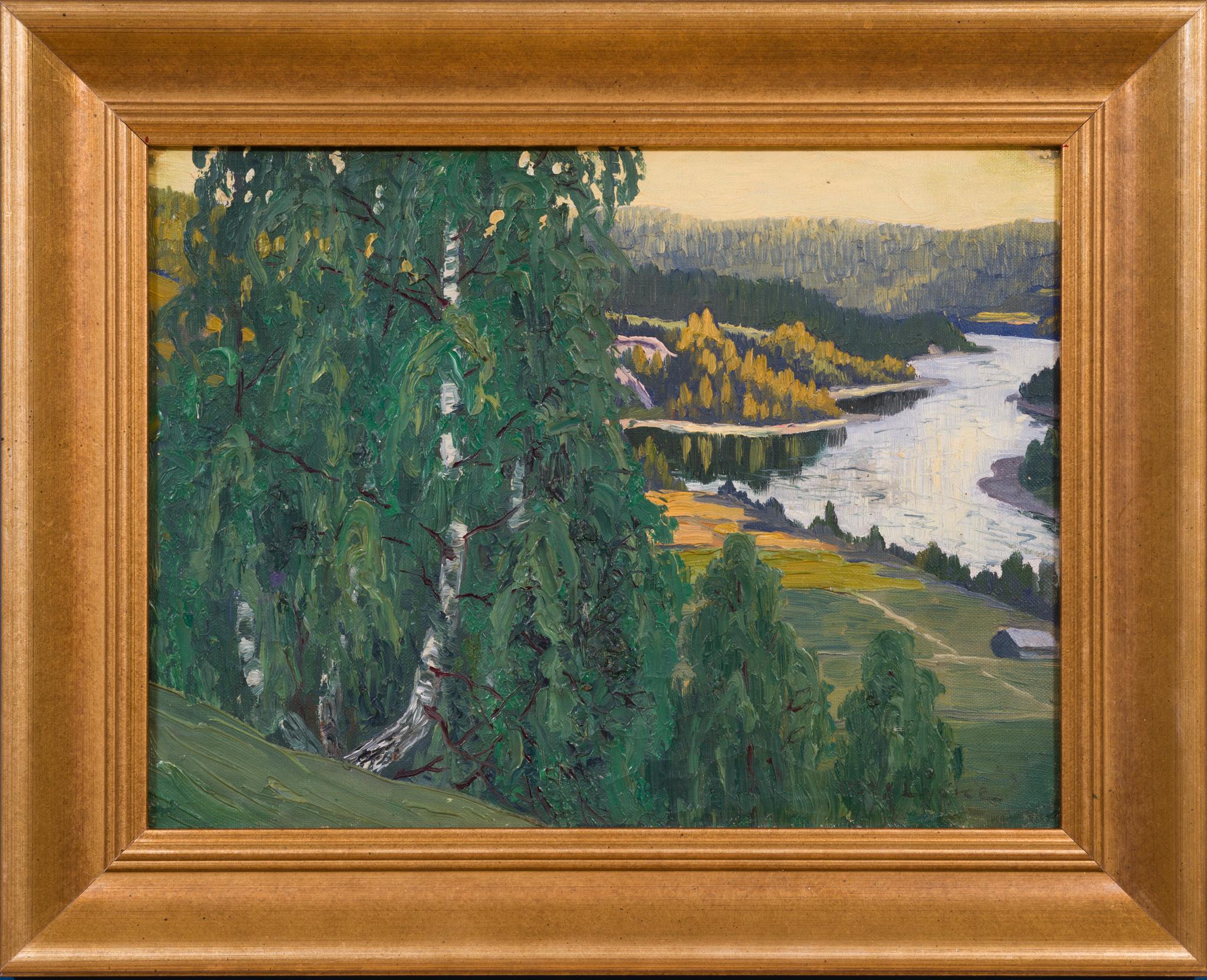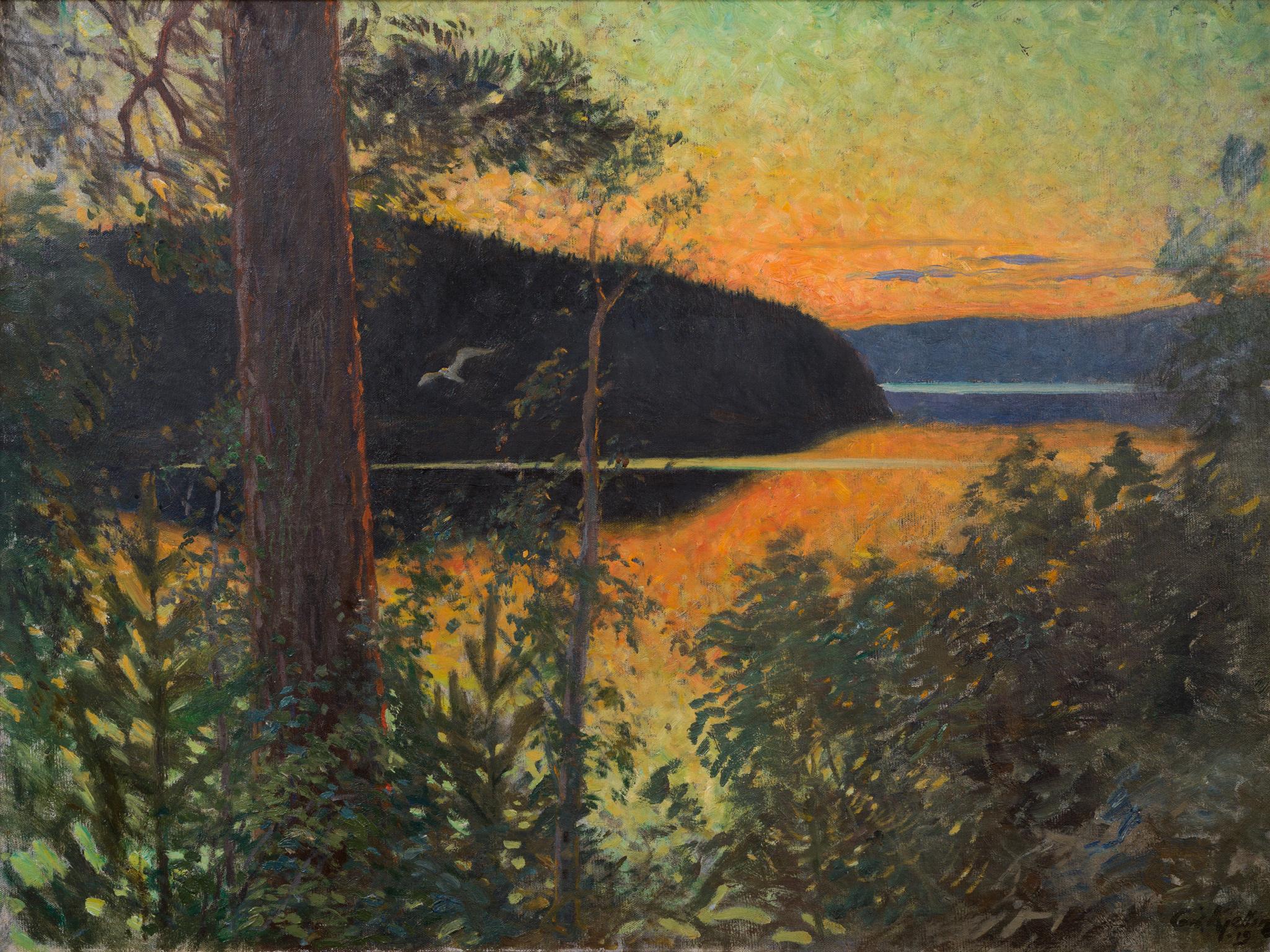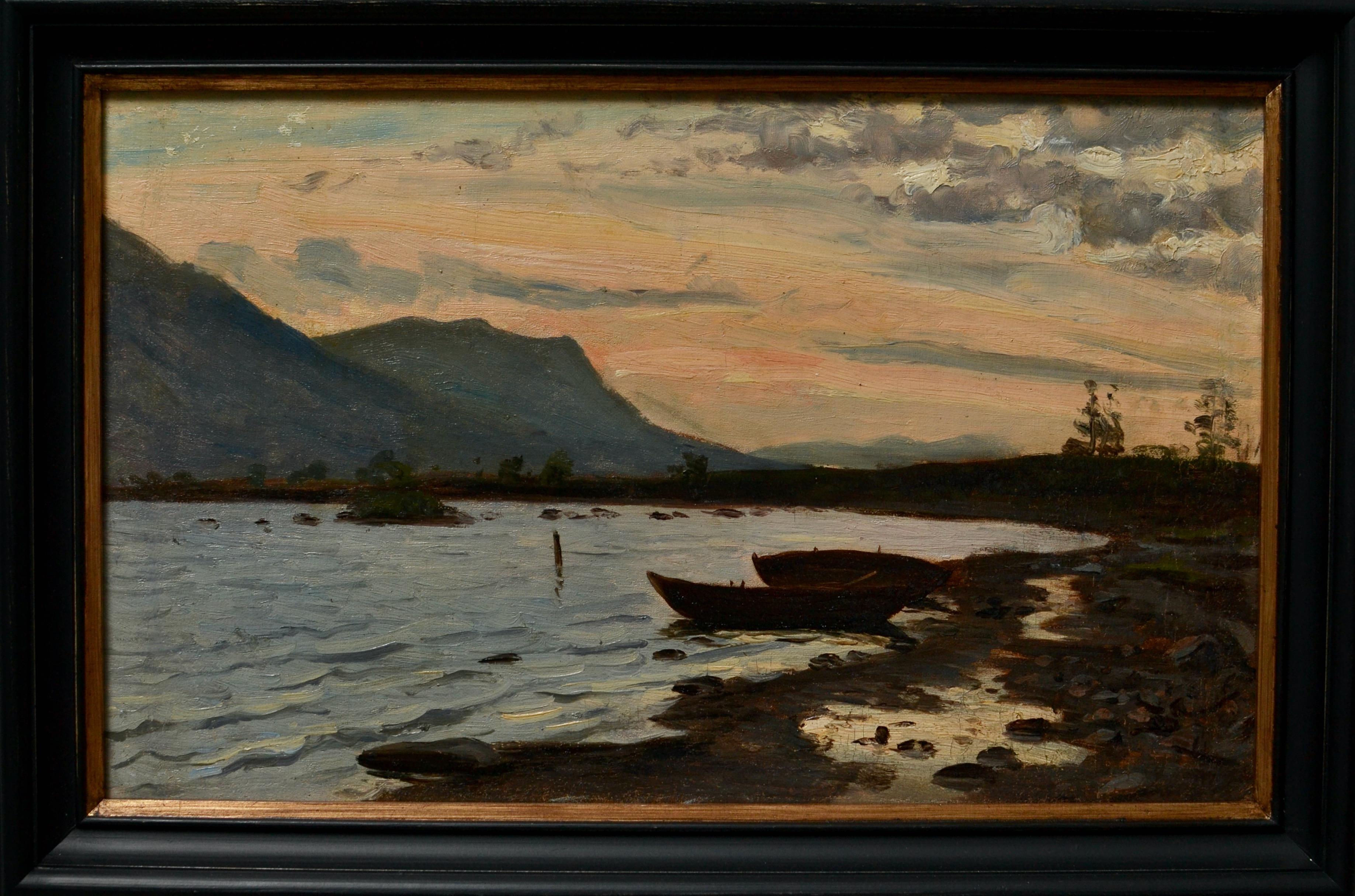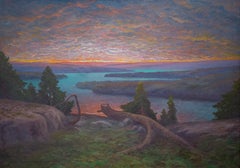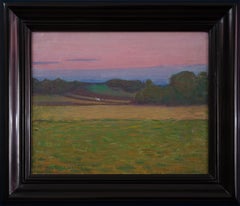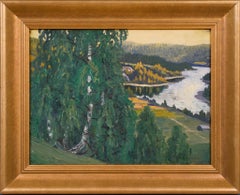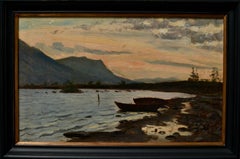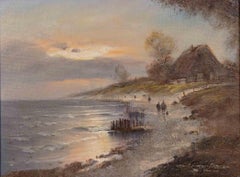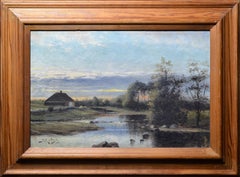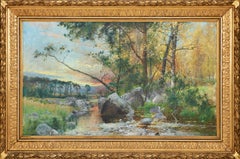Items Similar to Evening Glow by Swedish Artist Gustav Andreas Gehlin
Want more images or videos?
Request additional images or videos from the seller
1 of 10
Gustav GehlinEvening Glow by Swedish Artist Gustav Andreas Gehlinc. 1930
c. 1930
$1,846.08
$2,637.2530% Off
£1,371.38
£1,959.1130% Off
€1,540
€2,20030% Off
CA$2,563.49
CA$3,662.1330% Off
A$2,797.36
A$3,996.2330% Off
CHF 1,467.26
CHF 2,096.0930% Off
MX$33,974.88
MX$48,535.5430% Off
NOK 18,326.92
NOK 26,181.3130% Off
SEK 17,319.85
SEK 24,742.6530% Off
DKK 11,723.86
DKK 16,748.3730% Off
About the Item
Evening Glow by Gustav Andreas Gehlin
This exquisite oil painting, "Evening Glow," is a captivating work by the Swedish artist and photographer Gustav Andreas Gehlin. He studied under Carl Malmberg at the Västerås Technical School from 1913 to 1916, thereafter honing his craft through self-study and inspirational journeys to Norway and the South of France. A regular contributor from 1926 to 1951 at the annual exhibitions of Västerås artists and showcased at Liljevalchs Art Hall in Stockholm, Gehlin's artistry was well recognized.
Gehlin's work, including "Evening Glow," is celebrated for its subdued, atmospheric landscapes and still lifes, crafted in oil or watercolor. This painting perfectly encapsulates his mastery of mood, with its serene depiction of a landscape at dusk. The mellowed sky, painted in warm hues of yellow and orange melting into cooler blues, contrasts harmoniously with the dark silhouette of the forest. A tranquil body of water mirrors the sky's twilight beauty, enhancing the painting's overall tranquility. Gehlin's skillful use of light and shadow evokes a deep sense of calm and reflection.
Accompanied by a finely crafted new gold frame the is included in the purchase.
oil on canvas
signed G.Gehlin
Unframed 33 x 46.5 cm (13 x 18.3 inches)
Framed 43 x 57 cm (16.9 x 22.4 inches)
Provenance:
A private collection, Stockholm.
- Creator:Gustav Gehlin (1887 - 1970, Swedish)
- Creation Year:c. 1930
- Dimensions:Height: 13 in (33 cm)Width: 18.12 in (46 cm)
- Medium:
- Period:
- Condition:The surface is recently cleaned. Overall very good condition. New gold frame from 2024.
- Gallery Location:Stockholm, SE
- Reference Number:1stDibs: LU1445213839902
About the Seller
5.0
Platinum Seller
Premium sellers with a 4.7+ rating and 24-hour response times
Established in 2020
1stDibs seller since 2020
199 sales on 1stDibs
Typical response time: <1 hour
Associations
International Confederation of Art and Antique Dealers' Associations
- ShippingRetrieving quote...Shipping from: Stockholm, Sweden
- Return Policy
Authenticity Guarantee
In the unlikely event there’s an issue with an item’s authenticity, contact us within 1 year for a full refund. DetailsMoney-Back Guarantee
If your item is not as described, is damaged in transit, or does not arrive, contact us within 7 days for a full refund. Details24-Hour Cancellation
You have a 24-hour grace period in which to reconsider your purchase, with no questions asked.Vetted Professional Sellers
Our world-class sellers must adhere to strict standards for service and quality, maintaining the integrity of our listings.Price-Match Guarantee
If you find that a seller listed the same item for a lower price elsewhere, we’ll match it.Trusted Global Delivery
Our best-in-class carrier network provides specialized shipping options worldwide, including custom delivery.More From This Seller
View AllGolden Sunset Reflections over a Brook in the Evening Silence
Located in Stockholm, SE
In this atmospheric landscape at sunset, Fredrik Lagerström captures a fleeting twilight moment with vivid intensity. The sky is aglow with brilliant gold and amber hues, which are m...
Category
1890s Romantic Landscape Paintings
Materials
Canvas, Oil
A Scandinavian Landscape View by Swedish Artist Oscar Lycke, Large Size Painting
Located in Stockholm, SE
Oscar Lycke was a Swedish artist from Sundsvall. He is best known for his impressive colourful landscape paintings in a national romantic and realism styl...
Category
1920s Romantic Landscape Paintings
Materials
Canvas, Oil
$3,326 Sale Price
25% Off
An Autumn Evening Study, 1901 (En höstkvällstudie, 1901)
By Fritz Lindström
Located in Stockholm, SE
This landscape painting by Swedish artist Fritz Lindström captures the tranquility of the Stockholm archipelago. "An Autumn Evening Study, 1901" is a stunning portrayal of a rural scene at dusk. The painting's delicate pink and purple sky envelops the landscape in a soft glow, hinting at the transition from day to night. In the middle ground, a farmer with his horse can be seen plowing a field, adding a narrative element to this peaceful scene. This work is one of several paintings Lindström created during this period, following his time in France and prior to joining the Rackstad group in 1903.
BIOGRAPHY
Fritz Lindström started his artistic journey as an apprentice in decorative painting under Carl Grabow, where he met fellow artist Björn Ahlgrensson. He later studied at the Artists' Association School in Stockholm with Richard Bergh (1892–1894 and 1895–1896) and at Valand Art School in Gothenburg under Carl Larsson (1894–1895). His studies continued in Copenhagen and Paris from 1897 to 1899.
In 1900, Lindström returned to Sweden, drawn to Värmland by his friend and brother-in-law Björn Ahlgrensson. From 1903 onwards, he became part of the Rackstad group—a community of artists who saw the countryside as an ideal setting for artistic and spiritual work. This belief resonated with Lindström, and he remained dedicated to this lifestyle for over fifty years, living and working by Lake Racken.
Lindström's early artistic focus was on the challenging art of human studies, which piqued his interest. Despite financial struggles and difficulty selling his paintings, he gained recognition mainly for his portraits, known for their well-constructed composition and deep psychological insight. Portrait painting became crucial for his financial stability. Interest in his landscape paintings grew when the director of the National Museum happened upon his landscapes during an exhibition opening...
Category
Early 1900s Landscape Paintings
Materials
Canvas, Oil
$9,530 Sale Price
20% Off
Northern Valley View – Light, Stillness and Depth in the Swedish North
Located in Stockholm, SE
In this luminous landscape, Oscar Lycke invites us to experience the serene vastness of Sweden’s northern interior. Likely painted in the region surrounding Liden along the Indalsälv...
Category
1910s Impressionist Landscape Paintings
Materials
Oil, Board, Canvas
Sunset Over the Lake, 1919 by Swedish Artist Carl Kjellin (1862-1939)
Located in Stockholm, SE
"Sunset Over the Lake" by Carl Kjellin is a Nordic Light painting capturing the ephemeral beauty of a lake at sunset. The vibrant canvas, dominated by a b...
Category
1910s Post-Impressionist Landscape Paintings
Materials
Canvas, Oil
$4,603 Sale Price
20% Off
Forest at Sunset, 1934
Located in Stockholm, SE
This evocative landscape by Otto Lindberg captures the quiet beauty of a forest at dusk. The most striking feature is the luminous pink and violet glow of the fading sunlight, master...
Category
1930s Post-Impressionist Landscape Paintings
Materials
Canvas, Oil
You May Also Like
Nordic Light over Lake and Mountains - Oil on Canvas Circa 1900
Located in Stockholm, SE
Oil study by a lake and mountains during sunset by Edward Rosenberg (1858-1934). This is a an oil study for a larger painting that Rosenberg did. A te...
Category
Early 20th Century Naturalistic Landscape Paintings
Materials
Oil, Cardboard, Canvas
Evening Atmosphere - Painting by D. Lukas-Larsen - Late 20th Century
Located in Roma, IT
Evening Atmosphere on the coast is an original painting realized by Dieter Lukas-Larsen (1936 - 2001) in the late 20th Century.
Mixed colored oil painting on canvas.
Signed on the lower right margin.
This beautiful artwork shows an atmospheric coastal landscape in evening light mood with strollers on the beach and thatched house...
Category
Late 20th Century Naturalistic Figurative Paintings
Materials
Oil
Evening Twilight on River 1899 Scandinavian Oil Painting on Canvas Signed Framed
Located in Stockholm, SE
Evening twilight on the river - is a painting in which the light of a beautiful sunset merges with the mysterious waters of the river. This artwork immerses us in the atmosphere of a quiet and calm evening, when the sun is already setting behind the horizon, and the sky is painted in various shades of orange, yellow and pink. The trees, slowly plunging into darkness, add a special mystery to this landscape. The reflection of heavenly light and trees on the surface of the river creates a feeling of soft tonal shimmer. A lonely house...
Category
Late 19th Century Realist Landscape Paintings
Materials
Canvas, Wood, Oil
Landscape with Stream - 19th Century Oil on canvas
Located in Stockholm, SE
Arvid Mauritz Lindström (1849–1923) – Fall Landscape
The painting presents a vast autumn landscape illuminated by the soft glow of a setting sun. At the center, a stream winds its wa...
Category
Late 19th Century Naturalistic Landscape Paintings
Materials
Canvas, Oil
Mid Century Modern Swedish Expressive Landscape Oil Painting -Golden Hour Fields
Located in Bristol, GB
GOLDEN HOUR FIELDS
Size: 44 x 51.5 cm (including frame)
Oil on board
A charming and beautifully textured mid-century landscape painting that captures a tranquil rural scene rendered...
Category
Mid-20th Century Modern Landscape Paintings
Materials
Oil, Board
Scandinavian Winter Sun
By Edvard Rosenberg
Located in Wiscasett, ME
Oil on canvas, signed lower left. A luminous sunset or sunrise winter scene from Scandinavia. Edvard Axel Rosenberg (Swedish School, 1858-1934) In many ways Edward Rosenberg...
Category
1910s Flemish School Landscape Paintings
Materials
Oil
More Ways To Browse
Antique Swedish Frame
Edouard Cortes
Hill Country Painting
Large River Painting
Modern Industrial Paintings
Orange Tree Painting
19th Century Coastal Painting
Apple Blossom
Carpe Diem
Early Autumn Painting
Ecole De Paris Painting
French Market Painting
George Krevsky Gallery
Impressionist Cow Painting
Landscape With Barn
Oil Painting 1911
Paintings Of Trains
Paintings Pink Trees
